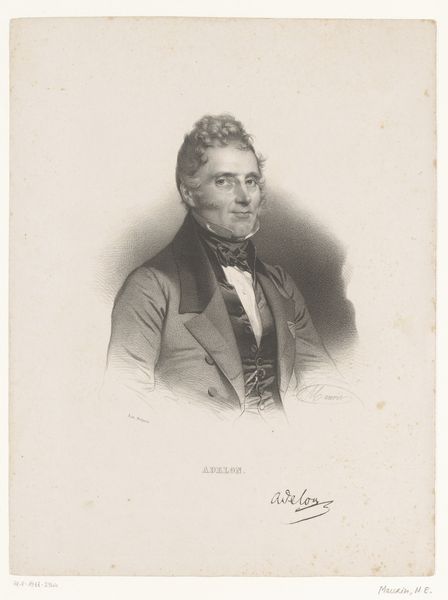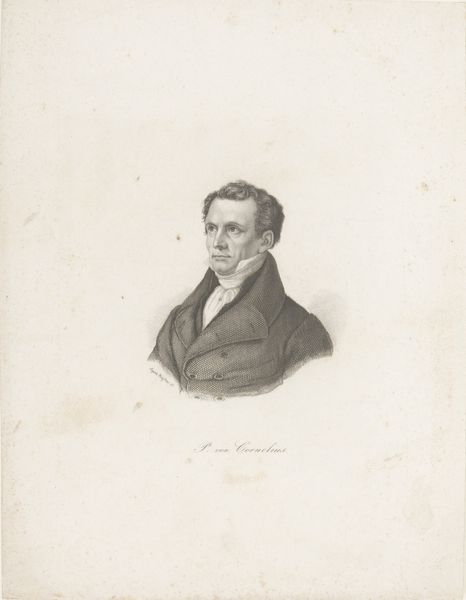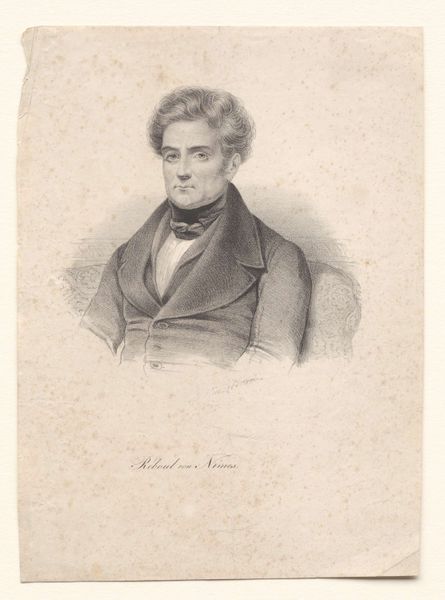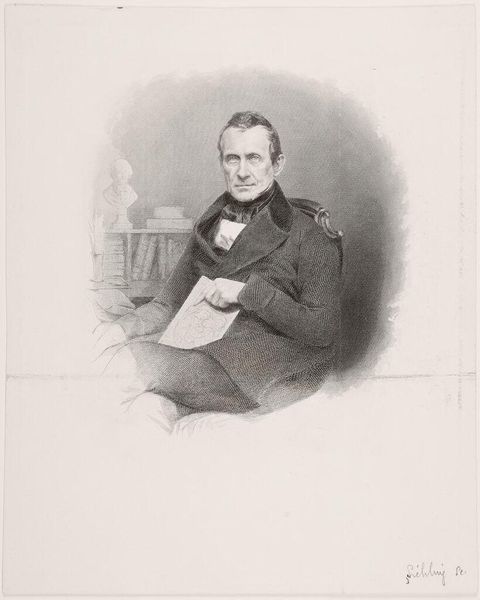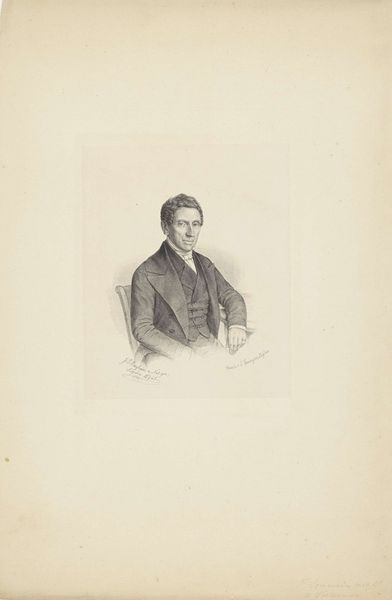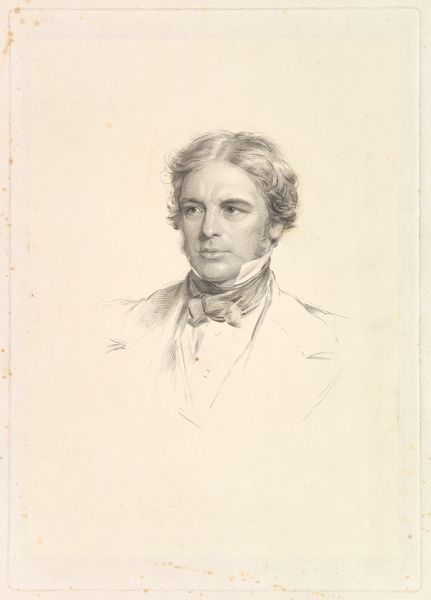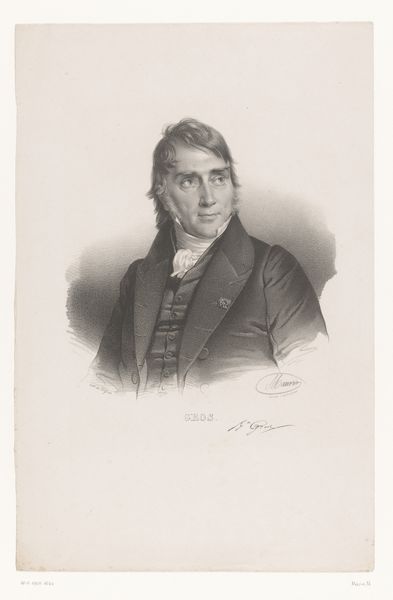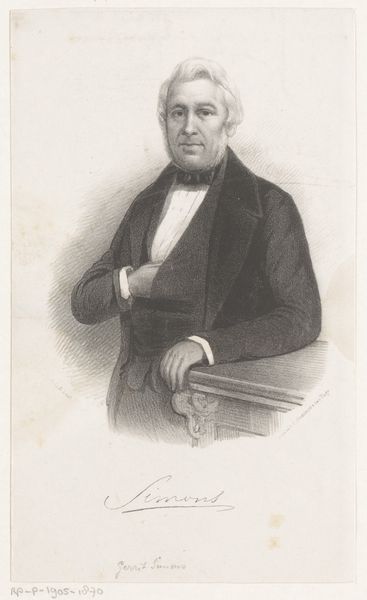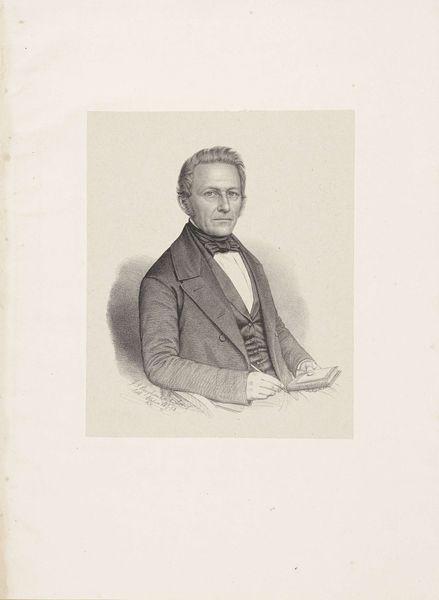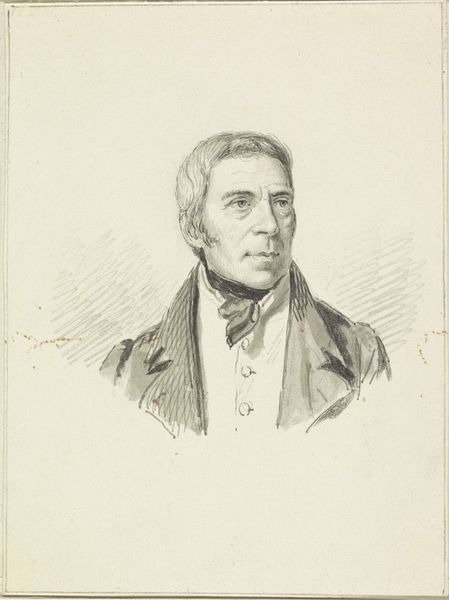
drawing, pencil, charcoal
#
portrait
#
pencil drawn
#
drawing
#
self-portrait
#
charcoal drawing
#
pencil drawing
#
romanticism
#
pencil
#
portrait drawing
#
charcoal
Dimensions: height 136 mm, width 121 mm
Copyright: Rijks Museum: Open Domain
Editor: Here we have Jacobus Schoemaker Doyer's self-portrait, likely from sometime between 1802 and 1867, made with pencil and charcoal. I'm struck by how direct his gaze is, almost challenging. What do you see in this piece? Curator: Beyond the formal elements of a Romantic-era self-portrait, I see a compelling example of how artists use their own image to negotiate identity and project a certain persona. The intense gaze, as you noticed, invites the viewer into a dialogue. Consider the time in which Doyer created this work – a period of social and political upheaval. How might this self-representation be a way for Doyer to assert himself? Editor: That’s an interesting perspective. I hadn’t really considered the political backdrop. So, the act of creating a self-portrait becomes an act of self-assertion within that context? Curator: Precisely. Think about the power dynamics inherent in portraiture. Who has the means to commission or create these images? For Doyer, creating his own image perhaps bypasses traditional patronage systems and allows for a more direct form of self-expression and perhaps, subversion. Also note the contrast of the strong lines of the coat, a suggestion of masculinity versus his slightly softer, somewhat romantic hair. How are we to resolve these visual tensions? Editor: I guess it does make me consider the power an artist holds, especially in choosing how they want to be seen. It’s more than just a picture; it's a statement. Curator: Exactly! And situating it within its historical context gives even greater meaning, doesn't it? I am now compelled to study other such portraits from the era. Editor: Yes, I’m definitely going to look at other self-portraits with a different eye now! Thanks for sharing your insight.
Comments
No comments
Be the first to comment and join the conversation on the ultimate creative platform.

